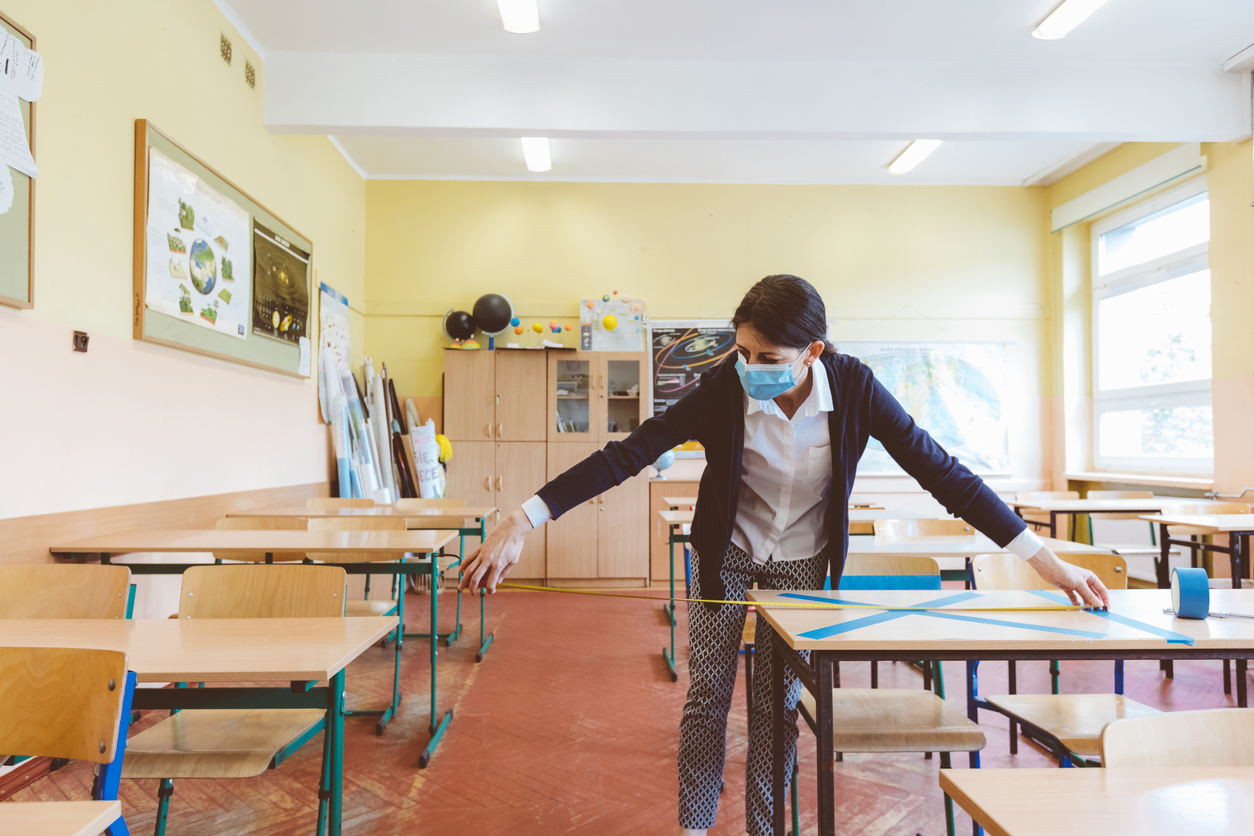So far, schools are getting little consensus from federal and state officials on how best to plan. The Centers for Disease Control and Prevention recommends considering community infection rates, among other factors, in deciding whether to close a school.
State guidance, meanwhile, is all over the map. California could see school buildings that open in the fall shut down again if multiple clusters of children get sick, or if infection rates in a school hit 5% within a two-week period, a state plan says. In New York, Gov. Andrew Cuomo has said schools would close if a region’s infection rate reaches 9%.
Schools’ plans for reopening their buildings include measures like requiring students and staff to wear cloth face coverings and having a small group of children stay in the same classroom with the same kids all day, including for lunch. Contingency plans for how to deal with an outbreak consider variables such as rate of transmission, size and layout of a school, and local capacity to test quickly for the virus.
In New York City, the nation’s largest school district, the chief operating officer of the city Department of Education, Ursulina Ramirez, said the agency is still working to determine how many positive Covid-19 cases in one school would prompt a building’s closure.
“Is it one? Is it two cases? Is it five?” Ms. Ramirez asked. “We have to really talk to parents and teachers and really see what their comfort level is. If there’s an individual case, we know that is going to cause some panic in our families and we want to make sure that they trust us, that we are both cleaning the buildings diligently and that we have protocols.”
Summer school has informed some districts’ plans. In Norwalk, Conn., as soon as someone at a summer school program tested positive in July, the building shut for three weekdays of disinfection, plus the weekend. All six people in the infected person’s group quarantined for 14 days.
“We determined we should err on the side of caution,” said Dr. Frank Costanzo, chief of school operations in Norwalk.
The CDC’s most recent guidance, released July 24, says that in most instances, a single case of Covid-19 in a school wouldn’t warrant closing the entire building. It says community spread and how much contact the ill person had with others, as well as when such contact took place, need to be considered. It says these variables should also be factors in determining how long a school, or part of a school, stays closed.
The agency didn’t specify a number of cases or a community infection rate that should trigger closures. Instead, it stressed schools should work with state and local public health officials in making decisions.
On top of worrying about whether schools will have adequate ventilation, cleaning and space for students to social distance, many parents have expressed concerns about whether schools will handle virus cases properly, and whether they will alert families immediately if anyone on campus gets infected. New York City’s Department of Education, which faced criticism from parents in the spring for insufficient transparency, has pledged to notify families promptly.
“All parent leaders are concerned, not just that the DOE has protocols but that schools follow them,” said Martha Kessler, who serves on a council of parent representatives of Manhattan high schools and has a daughter entering 12th grade. “The system has enormous autonomy for principals.”
In Massachusetts, guidance from the state’s Department of Elementary and Secondary Education doesn’t say how many students or staff would need to be Covid-19 positive for a campus to shut down, saying local health officials will determine next steps in cases of suspected in-school transmission “beyond one cohort or a small number of cohorts.” Responses could include closing the entire building, or part of it, for an extensive cleaning that takes one to three days, for example. Or it might close for a 14-day quarantine.
Michael Simmon, who teaches U.S. history to eighth-graders at IN-Tech Academy in the Bronx, said he would rather stay with distance learning than go into the classroom because it would be hard to prevent infections from entering a large school like his, with more than 1,000 students. He said the school should shut down if a single case pops up, and he trusts his administration and staff to handle any infections responsibly, but “prevention is better than cure.”
Caitlin Rivers, an epidemiologist at Johns Hopkins Center for Health Security who helped develop a school reopening report for the National Academies of Sciences, Engineering, and Medicine, said it didn’t specify triggers for closure because so much depends on the context. That includes illness rates, a community’s risk tolerance, its ability to test a wide swath of students and staff quickly, and its public health system’s capacity.
Districts need to have contingency plans ironed out well before school starts, Ms. Rivers said. “It’s important for parent confidence to show these issues have been given due consideration,” she said.












